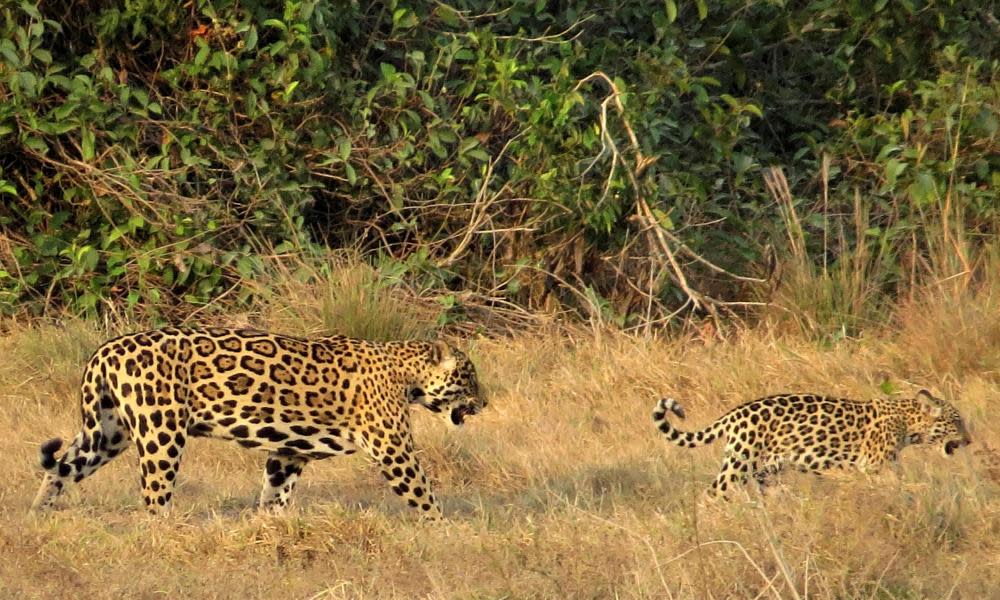Jaguars could be reintroduced in US south-west, study says

Jaguars could be reintroduced in the south-western US, where hunting and habitat loss led to the big cats’ extinction, a new study says.
Scientists and other environmentalists make the case for bringing back the third-largest big cat, after tigers and lions, in Arizona and New Mexico in a paper published in the journal Conservation Science and Practice.
Related: The jaguars fishing in the sea to survive
The authors believe restoring jaguars can be a net benefit to people, as well as the “cultural and natural heritage” of the states in question.
“We see reintroducing the jaguar to the mountains of central Arizona and New Mexico as essential to species conservation, ecosystem restoration and rewilding,” the paper states.
The authors say an area of more than 31,800 sq miles could support from 90 to 150 adult jaguars, a population that could be viable for at least 100 years. The last known jaguar in the region was hunted in 1964, according to the paper. Killing a jaguar is illegal under state and federal law.
Jaguars are found mostly in South America in the Amazon Basin, though there are also populations in Central America.
In 2019, the US Fish and Wildlife Service released a Jaguar Recovery Plan but did not include the region now proposed by scientists.
More than 68% of that region is managed by the US Forest Service, the Bureau of Land Management and the National Park Service. The White Mountain and San Carlos Apache tribes manage about 13% of the land.
The study indicates the proposed area is potential jaguar habitat due to the availability of water and prey: jaguars take prey including fish, turtles and even caiman.
The area proposed by the study is also relatively free from human disturbance. About 1.1% has been developed for urban uses, cultivated crops or pasture or hay, according to the study.
The authors of the study include scientists from the Wildlife Conservation Society, the Center for Landscape Conservation, Defenders of Wildlife, Wildlands Network, Pace University, Universidad Autónoma de Querétaro, Life Net Nature and the Center for Biological Diversity.

 Yahoo News
Yahoo News 
